Fashion Needs to Address Its Plastic Problem, Social Issues, Says EU Panel
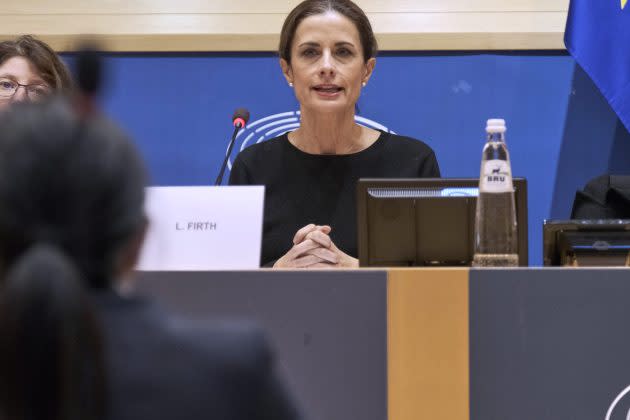
PARIS — Just ahead of the opening of COP28 in Dubai, legislators and activists headed to Brussels to both mark the progress and push for stronger regulation of the fashion industry within the European Union.
A panel discussion titled “Fashionscapes of Transformation” hosted by MEP Alessandra Moretti brought together policymakers, including European Commissioner for the Environment Virginijus Sinkevicius, European Climate Foundation chief executive officer Laurence Tubiana and European Commission Directorate General for Environment deputy head Paola Migliorini alongside host Livia Firth, founder of global sustainability consultancy Eco-Age.
More from WWD
Axel Arigato Turns Upcycled Soles Into Speakers With Transparent
Remake Gets Grant From Fashion Impact Fund to Put Garment Workers Front Row
“Having done this now for over 15 years, for me there’s only one thing — legislation, legislation, legislation,” Firth told WWD about the industry’s failure to self-regulate. For all the talk about sustainable fashion, brands have little economic incentive to change, she said.
“The system is very sustainable — for the usual suspects, which have a vested interest in keeping the system as it is,” added Firth. “It’s important that we put in place rules that you need to comply [with]. Otherwise, nothing will change.”
That is what the EU is doing with more than 16 bills — regulating everything from the design phase to waste collection and export, corporate reporting and microplastics — winding their way through its byzantine legislative process, all with the fashion industry in their sights.
The laws, all currently in different stages but expected to be in place by 2030, are meant to work as an overarching suite of rules under the EU’s Strategy for Sustainable and Circular Textiles.
Key elements of the Textiles Strategy, such as the Eco-design for Sustainable Products Regulation, are due to conclude negotiations before the end of 2023, while other pieces will continue in deliberations ahead of the next European elections in June 2024.
“They all depend on each other,” said Firth of the way the regulations should work together.
The industry statistics presented by the panel are stark: clothing production is responsible for approximately 8 percent of global carbon emissions, according to the United Nations Alliance for Sustainable Fashion.
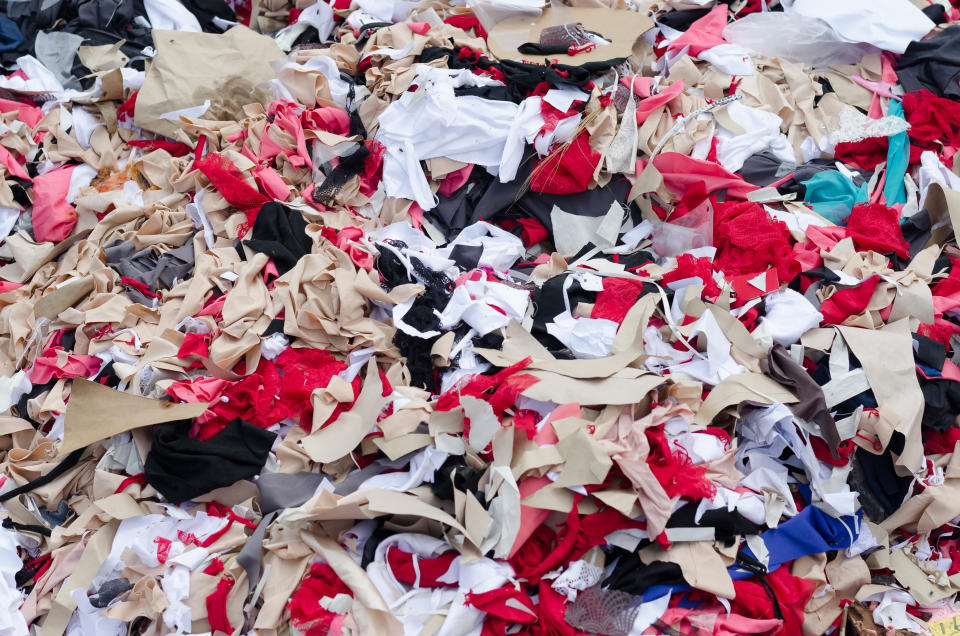
Nearly 6 million tons of textiles are discarded every year in the EU, or about 25 pounds per person, while only 1 percent is recycled back into new products, said Sinkevicius. Textile consumption has the fourth-largest impact on the environment and climate change in the EU, particularly water and land use, he added.
In a wide-ranging discussion, the panelists all touched on key themes that are intertwined in the fashion industry: overconsumption and production, lack of worker protections and fair wages, fossil fuel and plastic-based textiles and waste.
Sustainability Should Include Workers’ Rights
Natalie Swan from the Business and Human Rights Resource Centre encouraged the EU to broaden its definition of sustainability to include the fashion industry’s impact on workers and communities. The Corporate Sustainability Due Diligence Directive, which requires companies to account for human rights in their supply chains, is in the negotiation process, expected to be concluded by 2024 and implemented within two years.
Garment workers are already feeling the physical impacts of climate change, including extreme weather such as the flooding in Pakistan last year which decimated the cotton fields, causing job losses and economic ripples throughout the country. They are also dealing with heat stress, as they must work with heated machinery even during extreme weather events.
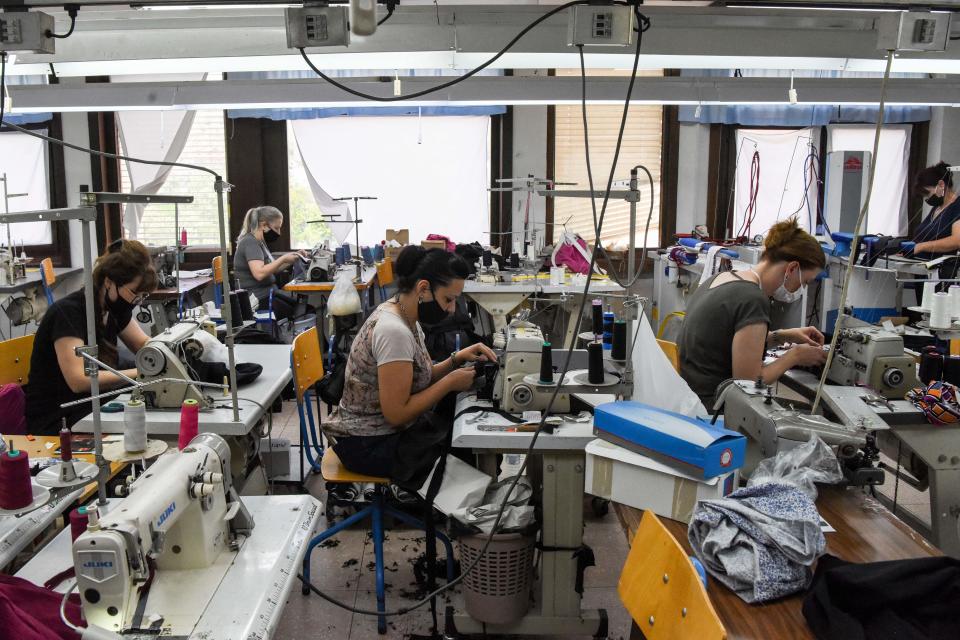
Workers often cannot afford health care, are asked to pay for their own protective equipment and are faced with low wages as producers increase their margins. Low wages are “baked into the fashion business model,” she said.
Swan added that the EU can use its legislative leverage to change the industry for the 300 million garment workers around the world, 80 percent of which are women.
The European Commission’s Migliorini noted that the proposed rules will give countries “more power, more resources to strengthen their market surveillance mechanisms” that go beyond EU borders.
Where the EU’s Waste Goes in the Global South
Yayra Agbofah, Ghanaian activist and founder of nonprofit organization The Revival, called on the EU to stop clothing exports that are dumped in the Global South. He noted that on Nov. 17, the EU agreed on a deal to stop shipping recyclable plastic waste to non-OECD (Organization for Economic Cooperation and Development) countries, but the new rules don’t include clothing and textiles sourced from fossil fuels and plastic.
Ghana alone receives 23 million items every week labeled as secondhand goods; however, most are not usable and instead create mountains of waste.
“If you’re thinking about actions, you need to think about policy-driven actions that include Africa, that include places like Ghana, from the onset,” he said. “It shouldn’t be on a boat, because we are at the receiving end of it.”
He said legislation should be twofold: banning specific items as well as supporting recycling facilities on the ground in countries like Ghana.
Firth noted that the long arm of the EU legislation affects the Global South. “When you legislate in Brussels as a privileged person in the Global North, where we consume the fashion, you have to remember that you are legislating for the person in Kenya, Ghana, Bangladesh and they are part of it,” she said.
Strengthening Certifications With Support
Matteo Ward, host of Sky TV series “Junk,” which looks at the apparel industry’s environmental effects, discussed his investigations into fashion supply chains. He addressed the economics of making ecological choices, emphasizing that as fashion seeks to reform its supply chains, it has to address wages and payments to producers.
Ever since supply has surpassed demand, price has become the main factor of the fashion industry.”
Simon Giuliani, Candiani Denim
Environmentally damaging practices are economic at their root, and that workers he spoke with were willing to make unwanted environmental tradeoffs due to dire economic circumstances.
“Merchandising practices force the very low wages of these people, because the cost of the product has to stay so low that the economic conditions do not support an ecological transition,” he said.
He cited the example of working in Indonesia, which cuts approximately 300 million trees per year to produce viscose. “The industry needs that [natural] capital as a source of revenue…for what is transformed into garments that are worn a couple of times and then trashed,” he said.
He witnessed old-growth forests being cut and noted that many of these trees were being sent out certified as sustainable. “Brands were paying to say the sources of their pulp to create artificial fibers was ethically made, responsibly sourced, but in reality these certifications are false,” he alleged, issued by financially desperate workers.
His second example was of certified factories in Bangladesh that he said were not using their filtering equipment before dumping dye waste because they could not afford to run it.
Ward added that while the industry is trying to tackle issues with technology, it’s a Band-Aid at best. “We cannot recycle ourselves out of these problems,” he said. However, he pointed out that fashion shapes ideas and culture and called on brands to use that power for good.
“It’s an industry that can literally change behaviors,” he said.
Brands Need to Move Away from Oil, Back New Materials
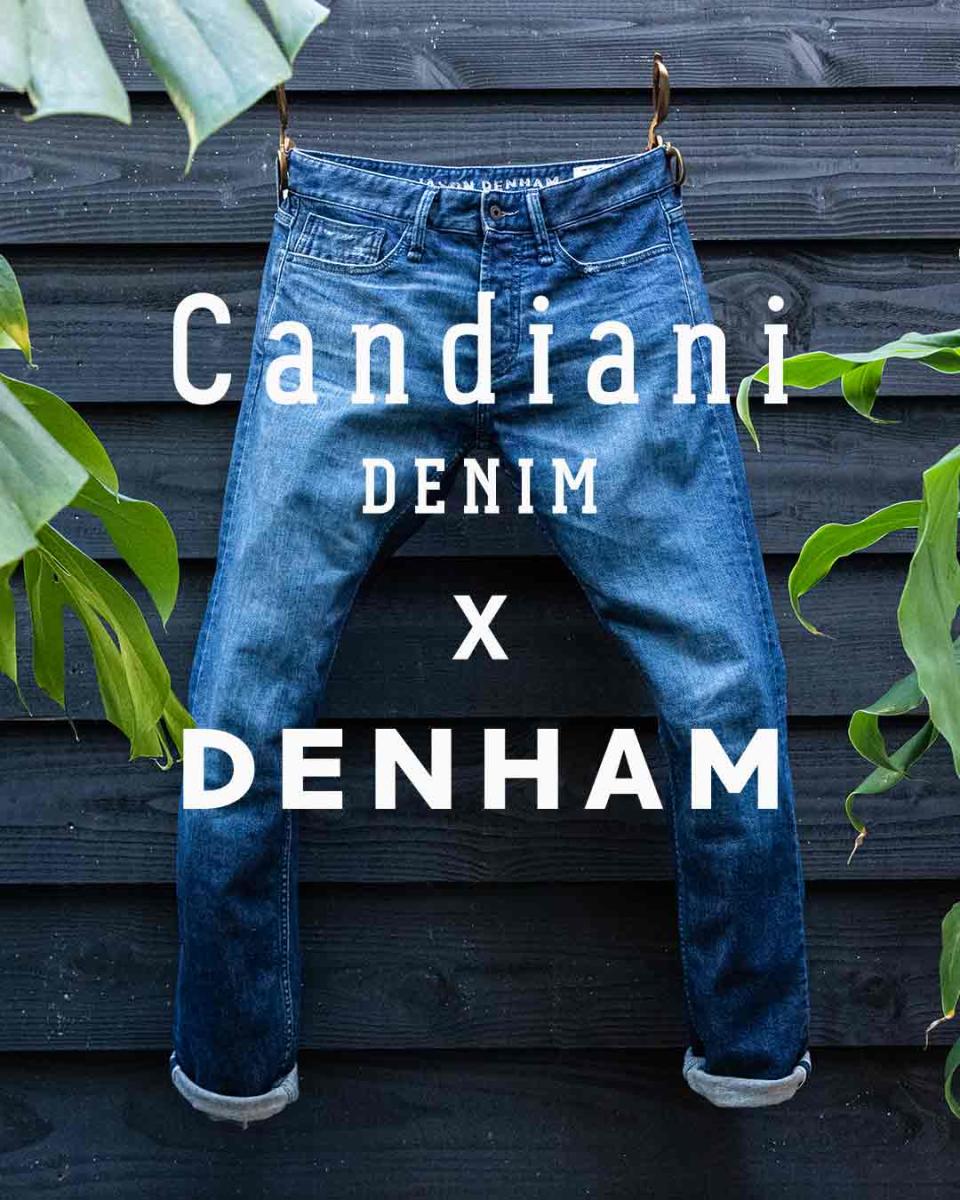
Simon Giuliani, head of sustainability and strategy of Candiani Denim, said the company created a bio-based elastane called Coreva which gives jeans stretch, but unlike oil-based synthetics is biodegrade and recyclable.
However, Giuliani said that while brands often talk about “next generation” textile solutions, they don’t back that up with purchases of new or innovative products due to price pressure, and don’t want to pay European wages. Overproduction is the root cause, plus the cost to chase pennies on margins.
“Ever since supply has surpassed demand, price has become the main factor of the fashion industry,” he said.
Seventy-seven percent of all the clothing sold in Europe is not produced within the bloc, he noted, instead using cheaper labor elsewhere. “Brands have to tap into low-cost supply chains in order to survive in the Western economy,” he said.
Giuliani advocated for legislation that incentivizes companies to invest in innovative materials, while Moretti noted that the proposed regulations are designed to encourage fiber-to-fiber recycling.
RELATED: An A-Z Guide to the Next-Gen Materials Taking a Step Forward for Sustainability
Brands Are Making Too Much Stuff
Nearly every panelist came back to overproduction and consumption. Core issues range from the environmental costs to the driving down of wages. All those Black Friday deals? Low prices “make people buy, and we have to deal with the waste,” said Agbofah. Halloween costumes from barely a month ago are already piling up on Ghana’s shores, he said.
“When activists or environmentalists point to the ecological nightmare that is today’s pace at which we produce and consume, brands largely respond by greenwashing and calming our worries. We’re told there is no need to slow down runaway consumption because the circular economy will save us all,” added Firth.
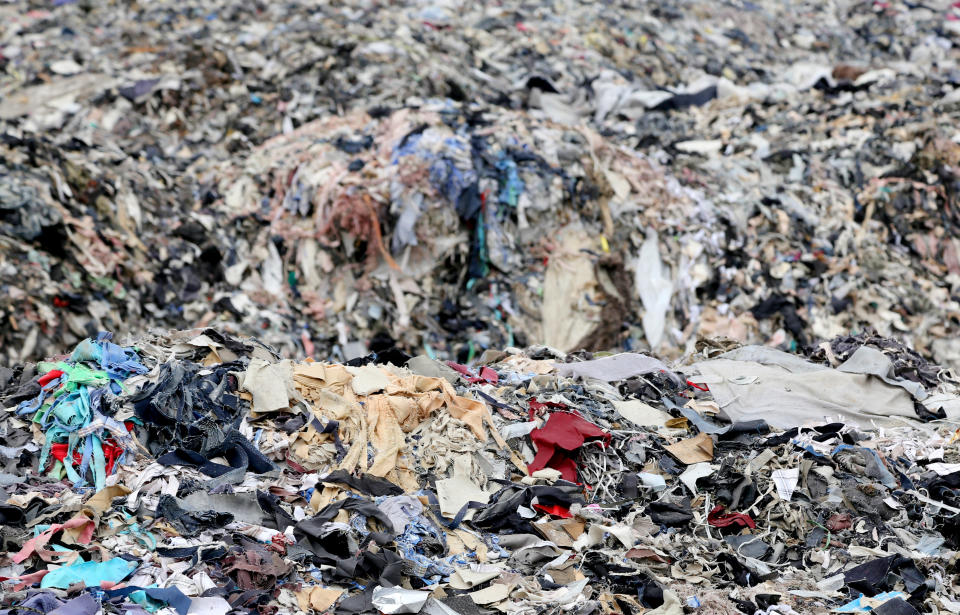
Migliorini noted that while the EU has curbed greenwashing through the Green Claims Initiative, it cannot ban advertising or regulate these kinds of promotions, but called on brands to have better practices.
Sinkevicius noted that while the price of clothes has decreased per item, households are spending more on clothing even as the cost of living crisis bites. “The problem that we are facing here is a consumption problem,” he said.
“We need to remind ourselves that a lot of these brands’ economic value is bigger than some countries’ GDP. So when we talk about governments, we need to make sure that governments are not falling into the pressure of these brands and companies,” added Moretti.
Embargoed Oil Ends Up on Main Street
Speaking from the audience, Urksa Trunk from the Changing Markets Foundation addressed how embargoed oil from Russia following its invasion of Ukraine is making its way to Main Street stores through India. That country does not have any sanctions against Russia, and has been buying up discounted oil.
Indian polyester producer Reliance sources oil from Russia, and increased its flow into the supply chain following the invasion of Ukraine in February 2022, according to import data outlined in the report. Trunk noted that Changing Markets alleges 39 global fashion brands produce with polyester made from Russian oil. Asos, Marks & Spencer, H&M, Hugo Boss, Mango, Nike, Target and Zalando are among the brands that indirectly source from Reliance, the report said.
Heading Into COP28
With COP28’s president Sultan Al Jaber also serving as chief executive officer of the United Arab Emirates’ state oil firm, there has been much skepticism surrounding this year’s host country, its environmental track record and its agenda. Still, it’s important to stay engaged, said Firth.
Speaking about COP, Firth said that fashion has historically been dismissed, but as an industry touches on many key environmental and emissions issues including agriculture, deforestation and use of fossil fuels. “We wear oil every day,” she said, noting that many fabrics — including the ever-present polyester — are made from oil and the fashion industry is continually increasing its use of polyester.
The continuing increase in production volume offsets any progress in efficiency or materials and is pushing fashion past the targets set by the Paris Agreement to limit global heating to 2.7 degrees Fahrenheit, added Firth.
“It’s easy to feel discouraged about COP,” said Firth. “Fashion has always been a very interesting advocacy tool, because people wear it every day. You see that these issues are so huge, but when you bring them back to what you’re wearing, it’s more digestible. It’s our responsibility to remind people.”
Tubiana was the key architect of the Paris Agreement at COP21 in 2015.
“We need to be vigilant that emissions don’t move elsewhere because the fossil fuel industry sees fashion as a growth sector. The fashion industry has a key role of cutting [off] another flow of demand from this sector, as we try to do on the transport sector, on heating and cooling. This will be a key debate in Dubai,” Tubiana said. “It’s an important political moment.”
On Oct. 16, the EU member states unanimously adopted the goal to seek a global phase-out of fossil fuels as its official position at COP28. The EU panel was held just ahead of the conference opening Thursday to “make sure that it is understood by the MEPs that work on textile strategy that they are a fundamental part of this,” added Firth.
Best of WWD


